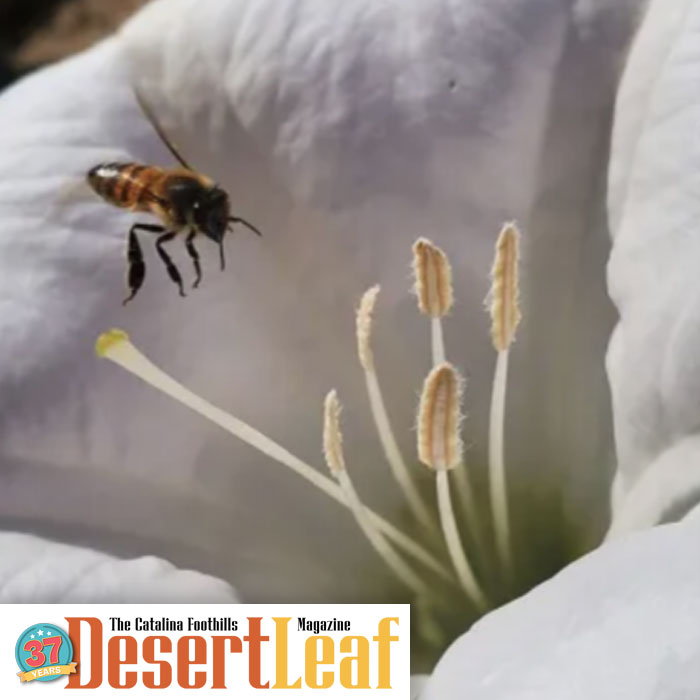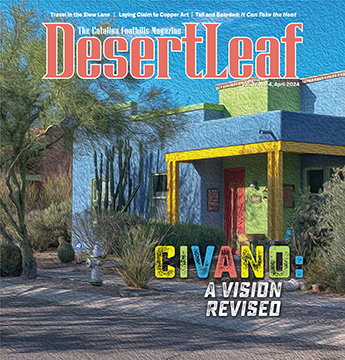by Kara Adams, Pima County Master Gardeners
When many people think of a desert, they think of a hot, dry, treeless landscape. This description doesn’t fit the Sonoran Desert at all. As the most biodiverse desert on earth, the Sonoran Desert is home to 3,500 species of plants, 500 species of birds, and 600-700 species of native bees.
Bees are members of the large insect order Hymenoptera (along with other insects such as wasps and ants). They are important pollinators, and in our region native bees play a crucial role in pollinating plants and agricultural fields.
In 2021, the US Fish and Wildlife Service recommended that the American bumblebee, once the most common bumblebee in the country, be protected under the Endangered Species Act. Native bees are not as recognized as hon eybees, but they play an equally essen tial role in healthy ecosystems. Across the country, populations of native bees are in decline due to loss of habitat and pesticide use.
While honeybees often steal the spotlight, native bee species are particularly important in regions like the Southwest. These indigenous pollinators have co-evolved with native plant species, forming intricate relationships that are vital for the survival of both and the health of the ecosystem. From the tiny sweat bee to the much larger bumblebee, these diverse pollinators are essential for the reproduction of countless plant species, including many of the crops we rely on for food.
Continue reading this article from Desert Leaf
All images & content for this article provided by Desert Leaf and their respective owners.


 Image by: Desert Leaf
Image by: Desert Leaf